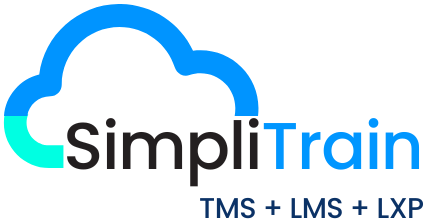In today’s fast-paced corporate environment, efficient training management is no longer a luxury-it’s a necessity. The ability to plan, deliver, and track training initiatives with precision is critical for driving organizational growth, enhancing workforce performance, and staying ahead in a competitive market.
But what exactly is a Training Management System (TMS)? How does it revolutionize corporate training programs while saving time and streamlining operations? Let’s explore this game-changing tool that’s transforming the future of learning and development (L&D).
What is Training Management?
Training management refers to the systematic planning, coordination, execution, and monitoring of training programs within an organization. The goal is to build employee skills, improve competencies, and support professional growth.
Key components of training management include:
- Identifying training needs
- Designing tailored learning experiences
- Managing delivery schedules
- Tracking participant progress
- Measuring training effectiveness
To manage all this manually is overwhelming. That’s where a Training Management System comes into play.
What is a Training Management System (TMS)?
A Training Management System (TMS) is a centralized software platform designed to manage the logistics, administration, and performance tracking of training programs. Often described as the backbone of corporate training operations, a TMS empowers organizations to streamline training workflows from start to finish.
Core Functions of a TMS:
- Training session scheduling
- Resource and instructor management
- Online registration and enrollment
- Attendance tracking and automation
- Reporting and performance analytics
By consolidating all these functions into one interface, a TMS enables seamless training delivery and optimized learning operations.
How a TMS Simplifies Training Coordination
One of the biggest advantages of using a TMS is its ability to streamline training coordination. In organizations with multiple training initiatives across different teams or regions, manually managing these can lead to scheduling conflicts, miscommunication, and inefficiencies.
A corporate training management system eliminates these challenges by centralizing:
- Training calendars
- Instructor availability
- Venue and resource allocation
- Learner communications
With automated reminders, rule-based triggers, and real-time dashboards, a TMS helps ensure that the right people receive the right training at the right time, without logistical headaches.
Save Time with Automated Training Management
Time-saving is another compelling reason why companies are turning to TMS platforms. Repetitive administrative tasks-such as sending confirmation emails, generating attendance sheets, or compiling post-training reports-consume countless hours.
A TMS automates these tasks, freeing up valuable time for L&D professionals to focus on high-impact work such as content development, learner engagement, and strategic planning.
Key Time-Saving Features of a TMS:
- Automated notifications and reminders
- Self-service registration portals
- One-click report generation
- Integration with HR and LMS platforms
- Custom workflows and approval processes
These features collectively contribute to faster training deployment, improved learner satisfaction, and better training outcomes.
Why Your Organization Needs a TMS
If your business is scaling, managing compliance training, or handling complex training logistics, investing in a Training Management System is a strategic decision. Here’s how a TMS supports organizational goals:
- Boosts training efficiency and accuracy
- Improves learner experience and engagement
- Delivers data-driven insights for better decision-making
- Reduces administrative workload and costs
- Supports scalability and global training operations
Why SimpliTrain Outperforms Traditional TMS Platforms
What sets SimpliTrain apart from traditional TMS platforms is its unified approach – merging the power of a Training Management System (TMS) with the advanced capabilities of a Learning Management System (LMS) and Learning Experience Platform (LXP).
Unlike standalone systems that only manage logistics, SimpliTrain delivers an end-to-end solution that supports personalized learning paths, blended learning, real-time analytics, and seamless integration with other enterprise tools.
Its intuitive interface, automation-first design, and scalability make it ideal for both small training teams and enterprise-level rollouts. With SimpliTrain, organizations don’t just manage training – they accelerate performance, engagement, and outcomes at every stage of the learning journey.











